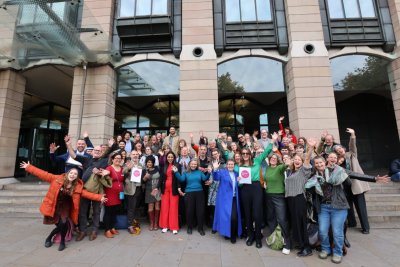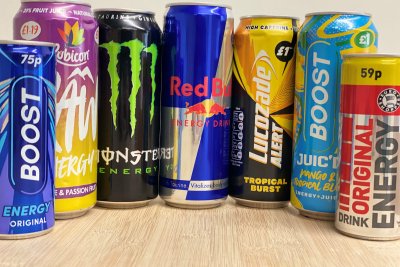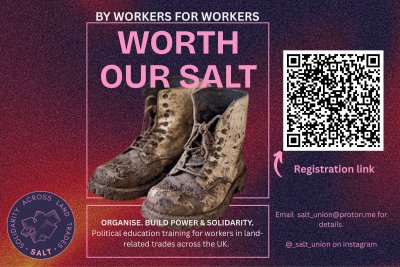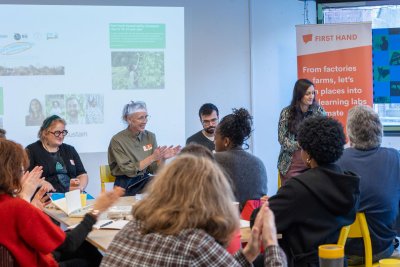This is not just rye flour. Or is it?
M&S causes confusion with 'ancient wheat' claim in rye flour marketing.
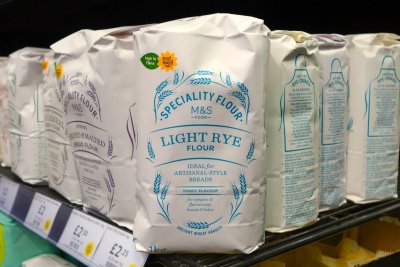
This week, someone contacted the Real Bread Campaign to say that the labelling of M&S own-brand 'Light Rye Flour' had left them confused.
What M&S does and doesn't say
M&S makes the prominent, front-of-pack claim: 'ancient wheat variety'. While rye and wheat are both cereals in the Pooideae sub-family of grasses, they are not members of the same genus, let alone varieties of the same species.
The blue panel on the pack rear, which M&S typically uses to publish ingredients lists on its products, simply gives an allergen declaration: 'Contains Rye and Gluten' - with no mention of the wheat highlighted by the front-of-pack claim.
Rather than clarification, the product page on the M&S website confuses matters further. It states the ingredients to be: Wheatflour contains Gluten (with Wheatflour, Calcium Carbonate, Iron, Niacin, Thiamin) – with no mention of the rye highlighted by the product name.
The product description on that page then includes the factually-incorrect statement: '… our Light Rye Flour is milled from an ancient wheat variety…’
What is it?
Is this flour milled from:
- Rye (Secale cereale)?
- An ‘ancient’ species of wheat, such as einkorn (Triticum monococcum) or emmer (T. turgidum subsp. dicoccum)?
- ‘Common’ or ‘bread’ wheat (Triticum aestivum)?
- A mixture of two or more of the above?
- Something else?
From which ‘ancient’ variety, of whichever species of wheat and / or rye, is this flour produced?
How do shoppers find the correct information?
If it is a mixture of flours, where is the full ingredients list, including the legally-required QUID to name the 'ancient' variety (or, at least, species) of wheat and show the percentage of it and rye that the flour contains; and allergen declarations for both wheat and rye?
We presume that M&S uses the descriptor ‘light’ in this context to denote that the flour is sifted, as opposed to being 100% wholegrain ‘dark’ rye flour, rather than a variety of rye that is lighter in colour. Is this correct and is the average consumer likely to understand this? If it is sifted, wouldn’t it be better for M&S to say so in the product description, perhaps even including the extraction rate?
We asked two members of staff in one M&S store but neither could answer any of these questions. One even said ‘rye is a type of wheat, isn’t it?’
On 23 May 2025, we emailed these questions to M&S, asking what action the company will take to amend its labelling, marketing and information provision online and in-store, and your timescale for doing so.
Cereal offenders?
It’s not just M&S. We have raised a number of labelling and marketing questions and concerns about most of the UK's largest supermarket chains and industrial dough fabricators, notably around ‘wholemeal’ marketing and ‘freshly baked in store today’ type claims.
However, M&S seems to be generating more questions and concerns than some of the other chains, also using the claim ‘only 5 ingredients’ to market a product for which the legal declaration lists 11 ingredients; and using a front-of-pack ‘heritage wheat’ claim, without giving the legally-required quantitative ingredient declaration (QUID) to name the variety and state the amount the product contains.
We wonder: is M&S attempting to profit from using the marketing value of such descriptors and claims to entice shoppers to pay premium prices and, if so, whether they are doing so out of ignorance or deliberate deceit?
(Before anyone raises the issue of hackers compromising M&S in April 2025, all of the issues we are investigating pre-date that cyber attack.)
Updates
LBTH = London Borough of Tower Hamlets, Sustain's / the Real Bread Campaign's local authority.
17 September 2025: We followed up with LBTH as part of a request for updates on all unresolved trading standards cases.
17 June 2025: LBTH replied 'I will look into these allegations and the response provided by M&S and get back to you.'
3 June 2025: As advised by Birmingham City Council, we sent our complaint to the trading standards department of London Borough of Tower Hamlets, the local authority for the Sustain / Real Bread Campaign office.
2 June 2025: Birmingham City Council, which has the Primary Authority relationship with M&S for trading standards, contacted us. They wrote: 'I’ve been forwarded your email sent to M&S on 23rd May 2025 regarding the Light Rye Flour. M&S have responded with the information below; “The rye is UK grown with the variety KWS Edmondo. This is a hybrid variety. Dark rye is a type of wholemeal rye flour where 100% of the grain milled is included whilst light rye is a paler (whiteish) rye flour where the darker fractions of the milling are removed. Rye flour is not fortified so the bread and flour regulations changes for folic acid are not applicable.”'
We replied that the reply from M&S confirms the company’s ‘ancient wheat variety’ claim about its own-brand 'Light Rye Flour' is both factually incorrect and misleading because:
- Rye (Secale cereale) is not a member of the wheat (Triticum) genus.
- KWS Edmondo is not an ancient variety of anything – it is a modern hybrid variety of rye, which only appears to have been added to the UK National List of permitted agricultural seed varieties as recently as 2018.
We asked Birmingham to advise what action they will take to ensure M&S amends this product’s labelling, marketing and information provision online and in-store, and the timescale for this process.
Birmingham replied that their: '...role as Primary Authority Partner is not to take action against the business. If you (or the person who has contacted you) are dissatisfied with the previous response received, or have further issues with M&S products you need to contact your Local Authority (Council) who can investigate'
23 May 2025: M&S replied: 'I have had a look into this, and regrettably I have not been able to locate the information you have requested. I have, however, raised this with our Food Technologists. Once I get a response from them, I will get back in touch with you with the information they provided.'
Published Friday 23 May 2025
Real Bread Campaign: Finding and sharing ways to make bread better for us, our communities and planet.

